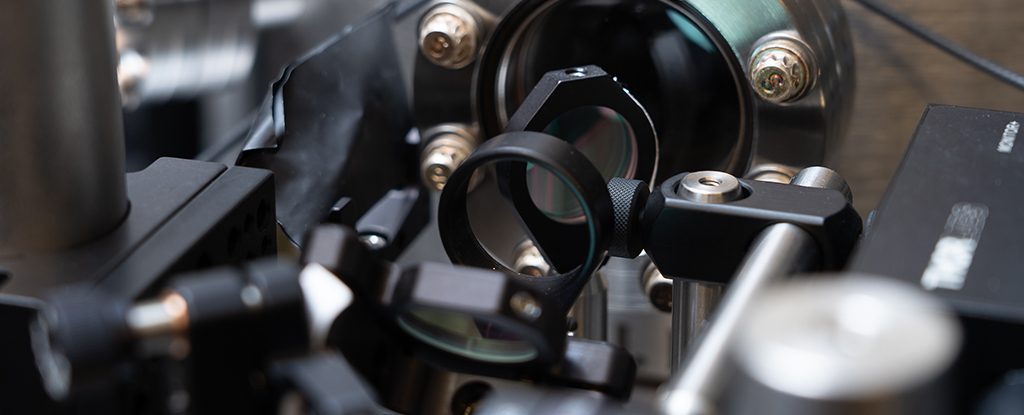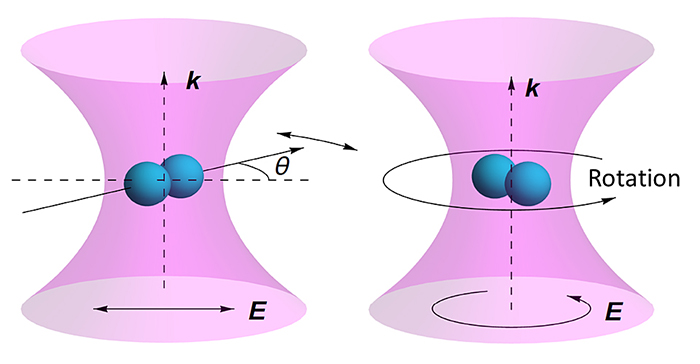Scientists have created a tiny rotor that rotates at speeds of up to 60 billion revolutions a minute – the fastest-spinning human-made rotor in history, and 100,000 times faster than your average dental drill.
The record-breaking invention not only pushes the boundaries of physics but could also be used to study some of the mysteries of quantum mechanics, and how objects operate in a vacuum.
We're actually dealing with some of the fundamentals of science here, like how gravity and friction work in a vacuum. Now that the nano-rotor is up and running, some detailed investigations can begin, according to the team of researchers.
"This study has many applications, including material science," says senior researcher Tongcang Li from Purdue University in Indiana. "We can study the extreme conditions different materials can survive in."
The super-spinner is made up of a silica nanoparticle, shaped like a dumbbell and levitated in a vacuum using a laser. The laser can be polarised in a straight line or in a circle, and its the circular mode that produces the rotations.
When the laser is straight, the dumbbell vibrates rather than rotating – which means it can consequently be used to measure very weak forces. Both modes of operation are going to be useful for future research.
The nanoparticle itself is only about the size of a bacterial particle, around 170 nanometres wide and 320 nanometres long, so you can't see it with the naked eye. But this is what the setup looks like:
 (Purdue University photo/Vincent Walter)
(Purdue University photo/Vincent Walter)
"People say that there is nothing in vacuum, but in physics, we know it's not really empty," says Li.
"There are a lot of virtual particles which may stay for a short time and then disappear. We want to figure out what's really going on there, and that's why we want to make the most sensitive torsion balance."
 Vibrate and spin modes. (Purdue University photo/Tongcang Li)
Vibrate and spin modes. (Purdue University photo/Tongcang Li)
One of the advantages of getting a nanoparticle suspended and rotating in a vacuum like this is that very precise measurements can be made, unaffected by the standard variations in air flow and temperature.
And this team isn't the only one busy working on getting nanoparticles rotating in a vacuum: the potential discoveries further down the line are substantial.
As for quantum mechanics, it helps scientists explain the behaviour of the Universe at the very small and the really big scales – areas where the classical physics model as we know it starts to fall down.
Having such a tiny object to experiment on should give is a better understanding at how the building blocks of matter work at the tiniest scales.
In other words, you might be hearing a lot more about this nanoscale rotor in the future.
The research has been published in Physical Review Letters.
